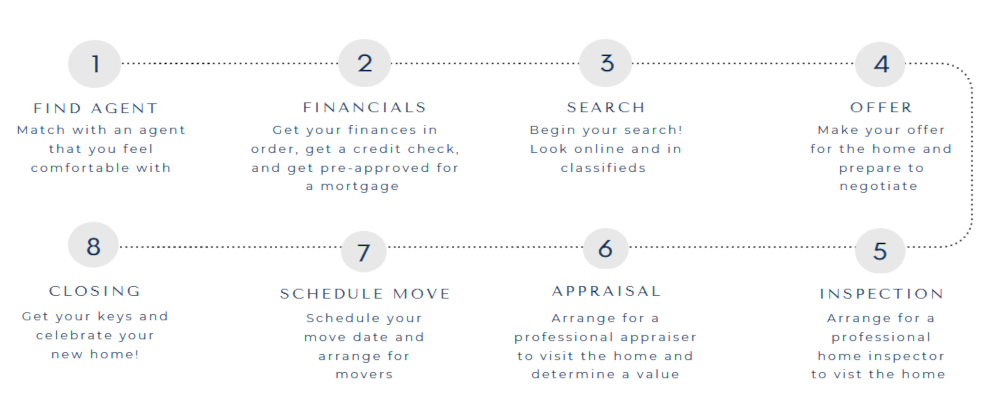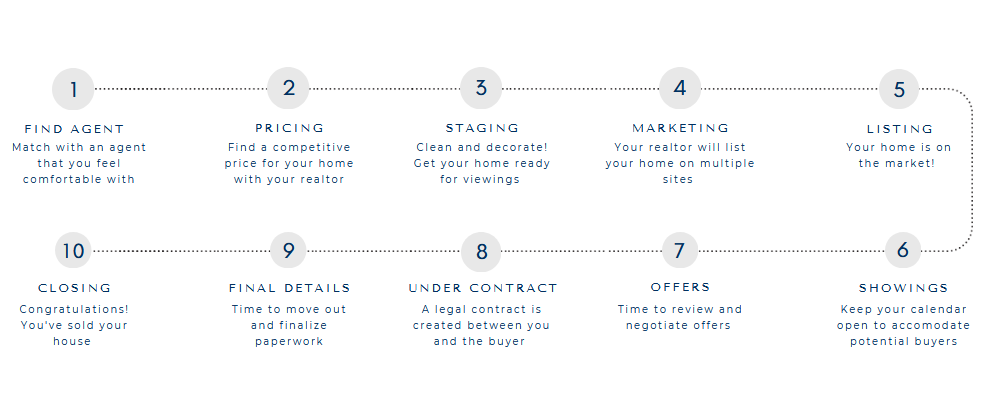Home Buying by the Numbers – Financing
FIXED RATE LOANS
You’ll always know what your payment will be.
Payments on a fixed rate loan are predicable because the interest rate does not fluctuate for the life of the loan. You will find that fixed loans have a bit of a higher interest rate than any other type of loan because lenders know these sorts of loans aren’t the moneymakers that something like an adjustable rate mortgage can be. Most financial experts agree, however, that if you can’t pay cash for a house then going with a fixed rate loan is the best choice. There will be no big surprises with your monthly payment and the only changes you should encounter are if your property taxes increase or decrease and if the annual cost of your homeowners insurance changes. If you pay taxes and insurance on your own then it is a safe bet to assume that your mortgage payment will remain the same for the entire life of the loan. Whether interest rates hit rock bottom or skyrocket up to the moon your interest rate remains stable when you have a fixed rate loan. If the thought of interest rates going down after you have signed all the papers makes you nervous then rest assured you can always refinance down the road if new interest rates make it worth the hassle.
An interest rate fluctuation won’t put you in the poorhouse.
You may wonder what the big fuss is about with adjustable rate mortgages…how much can interest rates fluctuate, really? Back a few years ago when the interest rates hit record lows many people scrambled to snatch up some of the adjustable rate mortgages, both for new purchases and for refinancing. Borrowers were practically salivating at the prospect of having a really low interest rate and didn’t think towards the future. After all, when interest rates are at a record low common sense tells us that they can only go one place: back up. So people who were enjoying their 3% rate on an adjustable rate mortgage noticed that every year the rate was crawling up…and up…and up! Unless they have since refinanced these same people have stupendously higher interest rates than what they originally had, and as the rates continue to climb they need to figure out ways to pay more on their mortgage payment each year.
If an increase of a few interest rate points does not worry you then consider this: at 3% interest the monthly payment on a $200,000 mortgage is around $845 for principal and interest. Bump up the interest rate only a few points to 6% and you’re looking at a monthly principal and interest payment of around $1200. That’s a difference of $355 per month, or $4260 a year. For most people, having to come up with this sort of additional money can cause real financial problems. It is best to simply go with a fixed rate loan and know what you are getting yourself into.
Look out for balloon payments.
You may find a great interest rate for a fixed rate mortgage and wonder what the gimmick is. If the lender or mortgage broker casually mentions the term “balloon payments” and then attempts to gloss over it without much of an explanation then you need to slam on the breaks and find a different mortgage product. A balloon payment is an interesting type of loan, which can turn out to spell disaster if a borrower doesn’t fully understand the terms of the loan. Here is how a balloon payment works: a loan will be amortized for a full term, such as a thirty-year period. This means that the borrower will pay the mortgage payments monthly, just as if it were a full thirty-year term. At a certain point, typically around ten years into the loan, the entire balance of the loan is suddenly due. This is the balloon.
So who in their right mind would accept a loan like this? Some people take on these sorts of loans when they know they will only be in a home for a certain amount of time and do not expect to ever encounter the balloon payment. Others take on these sorts of loans because it is the only product offered by the lender for certain circumstances, such as for investment properties. Unfortunately there are also some borrowers who simply don’t understand the terms fully and accept a balloon payment yet do not know that they are in for a rude awakening in ten or so years. It is best to simply stay away from a balloon payment, especially if this is your first time buying a home.
Know when to lock in your interest rate.
Most lenders do not lock in your interest rate when you apply, but instead you need to tell them when you’re ready to lock in the rate. Don’t make this decision hastily; you should research the recent interest rate trends to see which way rates are heading before locking in. Sine you don’t have a crystal ball, which magically tells you if current trends will hold constant, then you just need to use your best judgment. You shouldn’t get too caught up on tiny percentages either…if you hold out for a lowering of an interest rate which isn’t even going to make much of a difference at all in your monthly payment then you should just go ahead and snatch up the interest rate which is being offered lest the rate shoot up before you can lock in.





Responses